#Viardot
Explore tagged Tumblr posts
Text

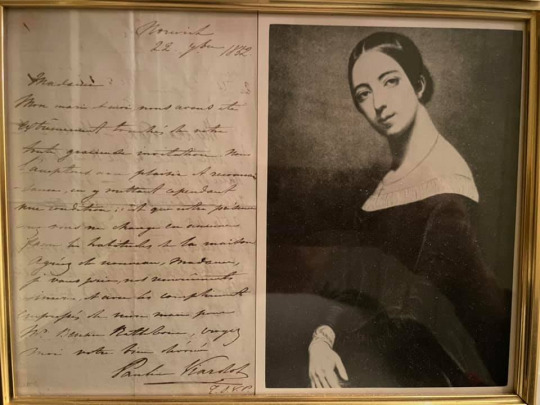
202 years ago today, the French opera singer, composer, pianist, singing teacher and editor
Pauline Viardot - García was born. Along with her equally famous sister Maria Malibran, her father Manuel García and her husband Louis Viardot, she cultivated friendships with all the great musicians, writers and personalities of her time. It is worth studying the life story of this fascinating woman. Here is an original letter from her from 1852
#Pauline Viardot - García#Pauline Viardot#Viardot#García#Pauline García#classical music#music history#opera#bel canto#composer#classical composer#aria#classical studies#classical singer#pedagogue#teacher#classical composers#classical musician#classical musicians#classical history#historian of music#musician#musicians#chest voice#diva#prima donna#mestro#mezzo soprano#classical singing#dramatic mezzo soprano
19 notes
·
View notes
Text

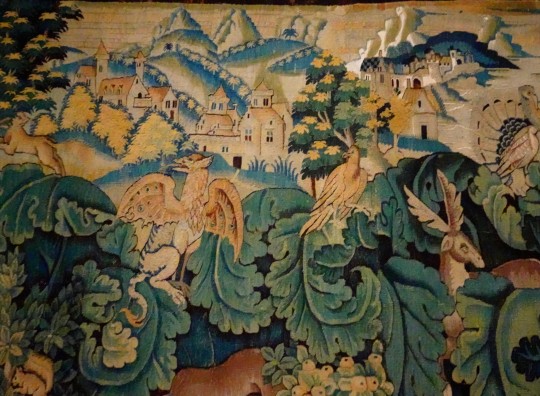

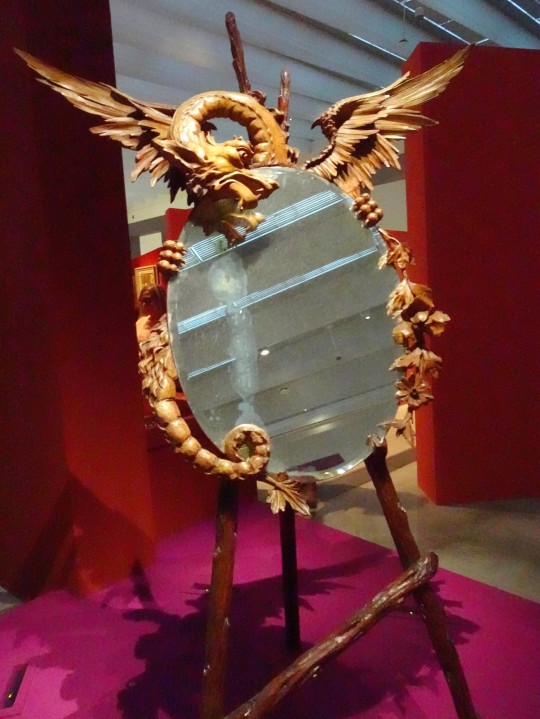
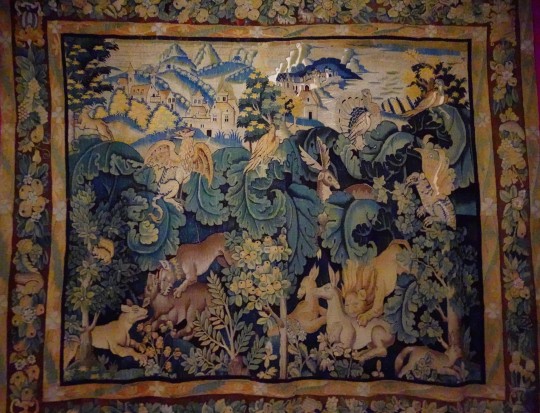
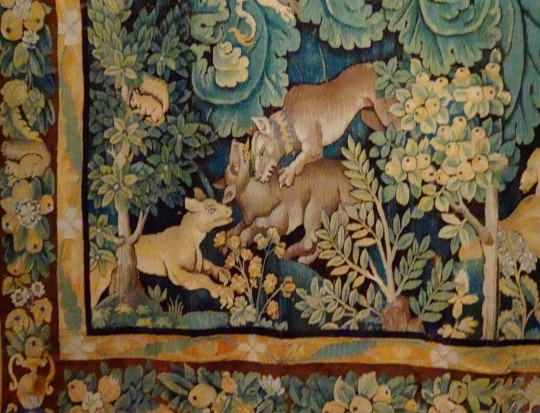
Il y a une petite quinzaine, je suis allé avec Julien et Katie, au Louvre-Lens pour une expo temporaire : "Animaux Fantastiques". Une très belle expo ! Ici des dragons.
Emile Gallé - verre soufflé, "Dragon Héraldique" - Nancy, 1894
2, 3 (et 5, 6) : atelier marchois - tapisserie, "Verdure à feuilles de choux - Flandres, 1550 (le dragon est dissimulé dans les feuillages, en compagnie d'animaux moins exotiques)
Gabriel Viardot - miroir sur chevalet - Paris, 1880
#expo#louvre-lens#animaux fantastiques#monstre#créature#dragon#émile gallé#gallé#nancy#atelier marchois#verdure#flandres#renaissance#tapisserie#gabriel viardot#viardot#miroir#verre soufflé
4 notes
·
View notes
Text

"Pauline Viardot" par Françoise Petrovitch (2022) encadrée par "La Malibran dans le Rôle de Desdémone (dans "Otello" de Giachino Rossini daprès William Shakespeare)" par François Bouchot (1831) et "Pauline Viardot en Sainte Cécile" par Ary Scheffer (circa 1851) dans la cadre de l'exposition "Françoise Petrovitch. Aimer. Rompre" du Musée de la Vie Romantique, août 2023.
2 notes
·
View notes
Text
youtube
Pauline Viardot (1821-1910) - Cendrillon, Act 2: "C'est moi, ne craignez rien" (Cendrillon, Prince)
Tenor Vocals: Jean-Luc Viala
Conductor, Piano: Nicholas Kok
Soprano Vocals: Sandrine Piau
3 notes
·
View notes
Text
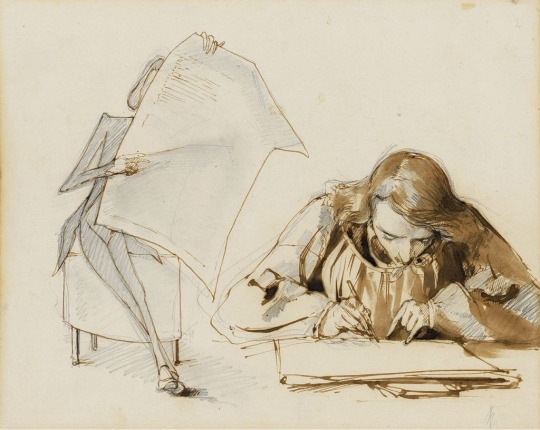

1. Fryderyk Chopin reading and Maurice Sand writing. 2. Portrait of Frédéric Chopin.
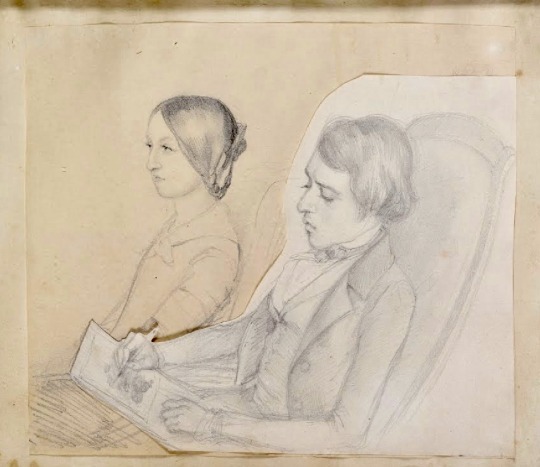
3. Maurice and Solange Sand (montage of two pencil drawings on paper)

4. Portrait of Fryderyk Chopin.

5. Caricature of Fryderyk Chopin.
Drawings by Pauline Viardot, talented pianist and opera singer, sister of Maria Malibran (famous diva) and friend to Chopin and Sand.
18 notes
·
View notes
Text
Mi crítica del concierto de Mégret, Cernat, Fausto y Martínez-Pierret esta noche en el Maestranza.
#delphine mégret#clara cernat#israel fausto#carmen martínez-pierret#Josephine Lang#Elfrida Andrée#Pauline Viardot#Cécile Chaminade#Mel Bonis#Rebecca Clarke#Clara Kathleen Rogers#amy beach#carita von horst#música#music
0 notes
Text
Havanaise (P. Viardot) Score Animation
youtube
1 note
·
View note
Text
Diva of the Romantic Age
Despite passing away at 28, Maria Malibran was one of the best-known opera singers of the 19th century. Known for her range, power and flexibility of voice, Malibran could sing both contralto and soprano parts. She also had a stormy personality, which remained legendary long after her death. María Felicitas García Sitches, born on 24th March 1808, grew up in a Spanish musical family in Paris.…
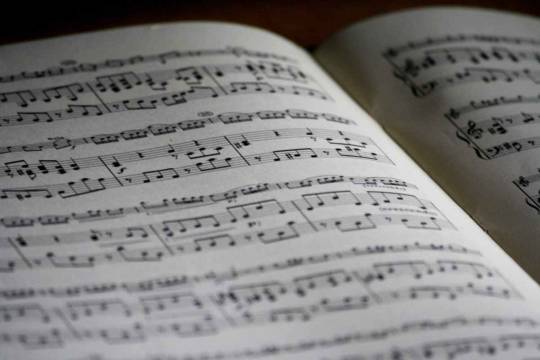
View On WordPress
#bellini#Charles Auguste de Beriot#diva#Francois Eugene Malibran#Joaquina Stiches#ko-fi#La Briones#La sonnambula#Letitia ELizabeth Landon#Manuel Garcia#Maria Malibran#Maria Stuarda#opera#opera diva#patreon#Pauline Viardot#ROssini#Teatro Malibran#The Barber of Seville#The Maid of Artois
0 notes
Text
youtube
Cendrillon (Cinderela) (Pauline Viardot) - Theatro São Pedro, São Paulo, 13/outubro/2023
Ópera completa com legenda em português: link.
Uma releitura da história da Cinderela com humor gaulês. O enredo permanece relativamente fiel ao conto de fadas original de Perrault. Adotando uma abordagem leve, a madrasta malvada é substituída por um padrasto desastrado e sem noção, e a Fada Madrinha aparece como convidada na festa e entretém os convidados com uma canção.
Esta ópera de 1904, com libreto da própria Pauline, é apresentada em português, com versão de André Dos Santos e orquestração de Juliana Ripke.
Wikipedia e Sinopse
Revista Concerto
Dando vida ao cenário da ópera Cinderela
Explorando a ópera Cendrillon (Viardot)
Personagens Principais - Barão de Pictordu, nobre de baixa linhagem; - Cinderela (Marie), filha de Pictordu - Armelinde, filha de Pictordu - Maguelonne, filha de Pictordu - A Fada-Madrinha - O Príncipe Encantado - Conde Barigoule
Sinopse
Ato 1 Marie (Cinderela) é a criada na casa de seu pai, um nobre de baixa linhagem em uma realidade alternativa da França onde a realeza ainda existe em 1904. A ópera começa com Marie cantando uma canção folclórica sobre um príncipe que deseja casar-se, mas não encontra uma esposa adequada, querendo apenas uma princesa. Um mendigo bate à porta, pedindo comida e dinheiro, e revela para a plateia ser o Príncipe, em disfarce, procurando uma esposa entre o povo comum. Marie oferece suas poucas moedas antes de ser interrompida por suas irmãs, que aceitam o convite para um baile à noite. Marie pensa no misterioso Valet (servente) que a impressionou, enquanto seu pai, o Barão, relembra seu passado como vendedor de verduras. Marie é transformada por sua fada madrinha e enviada ao baile com a condição de retornar antes da meia-noite.
Ato 2 De volta ao palácio, o Príncipe e Barigoule trocam de papéis novamente para a noite, e Barigoule canta sobre sua felicidade por ser o Príncipe pelo menos por uma noite. A família Pictordu (menos Marie) chega ao palácio e se apresenta a Barigoule através de uma série de entradas. Enquanto Barigoule tenta levar Maguelonne e Armalinde para ver "suas" riquezas, o Príncipe nota outra mulher que precisa ser formalmente apresentada, e a multidão fica surpresa com sua beleza antes de ele perceber que é a mulher por quem se apaixonou quando era um mendigo, enquanto Marie reconhece o Príncipe como o homem encantador que cantava. Barigoule propõe uma canção, e depois de uma apresentação pela Fada Madrinha, as damas dançam um minueto. Após a dança, Marie e o Príncipe têm um momento a sós, compartilham um beijo e Marie percebe que é meia-noite, saindo apressadamente e deixando para trás um sapatinho, enquanto os convidados cantam uma animada canção sobre rosas.
Ato 3 Barão Pictordu acorda em sua própria casa comentando que o Príncipe, ou quem ele pensava que fosse o príncipe, se parece notavelmente com alguém que ele conheceu no passado. Barigoule chega pensando a mesma coisa e revela que na verdade não é o Príncipe, mas costumava trabalhar com Pictordu quando era um vendedor de verduras. Eles relembram seu passado no comércio e seu interesse amoroso compartilhado, Gorthon. Barigoule traz a notícia de que o Príncipe está procurando pela dama no baile que deixou seu sapatinho para que ele possa se casar com ela. As irmãs ficam empolgadas com a notícia. O Príncipe, agora ele mesmo, agradece às damas por responderem ao seu apelo e começa a testar o sapatinho em cada uma delas. O sapato não serve para nenhuma das irmãs, e o Príncipe está prestes a sair, mas Barigoule lembra que há três irmãs na casa de Pictordu. Marie é trazida para a sala, e, é claro, o sapato se encaixa perfeitamente nela. O Príncipe imediatamente pede a Marie em casamento, sua família pede perdão por como a tratou. A Fada Madrinha retorna para dar seus votos ao novo casal, desejando-lhes felicidade, enquanto a multidão canta sobre a alegria delirante e o amor transbordante do novo casal. O pano se fecha com Marie e o Príncipe se beijando, prestes a viver felizes para sempre.
youtube
0 notes
Text
ouran is like one of those friend groups you form in your mid teens and then everyone realises they’re lgbt+ later on BUT importantly it’s also one of those friend groups where everyone slowly realises that they’re all autistic too. tamaki shows up in japan and just finds every vaguely autistic person he can and is like hey i feel like we vibe, do you want to join my gang
#kaoru: sorry about my brother he's not great with emotional regulation. guess i do that for both of us.#kaoru: ... anyway I have thoughts about Viardot's operatic of Cendrillon#kaoru: do you think the perseverence of the mythos of cinderella is an example of jung's theory of collective unconsciousness#haruhi trapped in place by kaoru doing her hair extensions: uh#*operetta but i'm not rewriting all these tags again
1 note
·
View note
Text
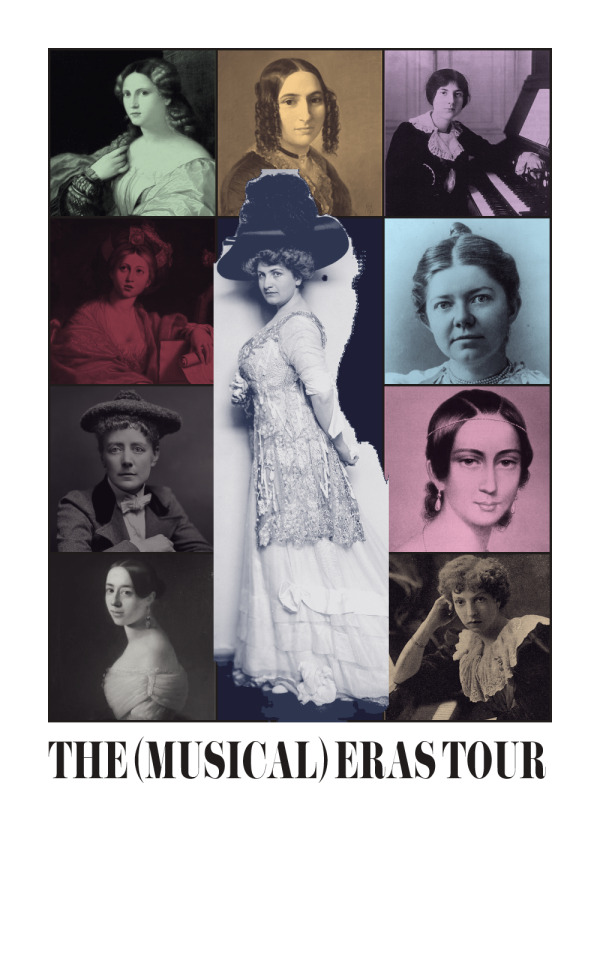
oops i did it again
I made something really silly wanna see it
#for the LADIES#debut = francesca caccini for the Some Guy's Daughter Who's More Talented Than Him energy#(taylor is a nepo baby don't forget xoxo)#fearless = fanny mendelssohn hensel wholesome hits all around#speak now = lili boulanger. award winning prodigal talent forever frozen in time because she died so tragically young.#on the cusp of growing up but never getting there#red = barbara strozzi. baroque babe who was caught in her FEELS. lagrime mie = all too well tbh#1989 = amy beach bc she made the most hits. the year's at the spring ah love but a day new romantics etc etc#reputation = dame ethel smyth because she truly did not give a FUCK#lover = clara schumann. conflicted on this bc clara was a bomb ass genius and more than just her love songs but. liebst du um schonheit.#ruckert poetry = lover lyrics#folklore = pauline viardot bc i voted her most likely to fuck off and write poetry in the woods. the diva retreats to write some stories.#evermore = cecile chaminade her work just has that 20th century esoteric romantic je ne sais quoi. she has the vibes#midnights = alma mahler because alma acted like she gave no fucks but she wouldn't have done all that if she hadn't given so many fucks.#she's bejeweled she dresses for revenge she's high infidelity she's the anti-hero she's just askin questions#librarian blogging
10 notes
·
View notes
Text


Pauline Viardot
Alfred de Musset covered Maria Malibran’s tomb with immortal flowers and he also told us the story of Pauline Garcia’s debut. There is also something about it in Théophile Gautier’s writings. It is clear from both accounts that her first appearance was an extraordinary occasion. Natures such as hers reveal themselves at once to those who know and do not have to wait to arrive until they are in full bloom. Pauline was very young at the time, and soon afterwards she married M. Viardot, manager of the Théâtre-Italien and one of the finest men of his day. She went abroad to develop her talent, but she returned in 1849 when Meyerbeer named her to create the rôle of Fides in Le Prophète.
Her voice was tremendously powerful, prodigious in its range, and it overcame all the difficulties in the art of singing. But this marvellous voice did not please everyone, for it was by no means smooth and velvety. Indeed, it was a little harsh and was likened to the taste of a bitter orange. But it was just the voice for a tragedy or an epic, for it was superhuman rather than human. Light things like Spanish songs and Chopin mazurkas, which she used to transpose so that she could sing them, were completely transformed by that voice and became the playthings of an Amazon or of a giantess. She lent an incomparable grandeur to tragic parts and to the severe dignity of the oratorio.
I never had the pleasure of hearing Madame Malibran, but Rossini told me about her. He preferred her sister. Madame Malibran, he said, had the advantage of beauty. In addition, she died young and left a memory of an artist in full possession of all her powers. She was not the equal of her sister as a musician and could not have survived the decline of her voice as the latter did.
Madame Viardot was not beautiful, indeed, she was far from it. The portrait by Ary Scheffer is the only one which shows this unequalled woman truthfully and gives some idea of her strange and powerful fascination. What made her even more captivating than her talent as a singer was her personality—one of the most amazing I have ever known. She spoke and wrote fluently Spanish, French, Italian, English and German. She was in touch with all the current literature of these countries and in correspondence with people all over Europe.
She did not remember when she learned music. In the Garcia family music was in the air they breathed. So she protested against the tradition which represented her father as a tyrant who whipped his daughters to make them sing. I have no idea how she learned the secrets of composition, but save for the management of the orchestra she knew them well. She wrote numerous lieder on Spanish and German texts and all of these show a faultless diction. But contrary to the custom of most composers who like nothing better than to show their compositions, she concealed hers as though they were indiscretions. It was exceedingly difficult to persuade her to let one hear them, although the least were highly creditable. Once she sang a Spanish popular song, a wild haunting thing, with which Rubinstein fell madly in love. It was several years before she would admit that she wrote it herself.
She wrote brilliant operettas in collaboration with Tourguenief, but they were never published and were performed only in private. One anecdote will show her versatility as a composer. She was a friend of Chopin and Liszt and her tastes were strongly futuristic. M. Viardot, on the contrary, was a reactionary in music. He even found Beethoven too advanced. One day they had a guest who was also a reactionary. Madame Viardot sang to them a wonderful work with recitative, aria and final allegro, which they praised to the skies. She had written it expressly for the occasion. I have read this work and even the cleverest would have been deceived.
But it must not be thought from this that her compositions were mere imitations. On the contrary they were extremely original. The only explanation why those that were published have remained unknown and why so many were unpublished is that this admirable artist had a horror of publicity. She spent half her life in teaching pupils and the world knew nothing about it.
During the Empire the Viardots used to give in their apartment on Thursday evenings really fine musical festivals which my surviving contemporaries still remember. From the salon in which the famous portrait by Ary Scheffer was hung and which was devoted to ordinary instrumental and vocal music, we went down a short staircase to a gallery filled with valuable paintings, and finally to an exquisite organ, one of Cavaillé-Coll’s masterpieces. In this temple dedicated to music we listened to arias from the oratorios of Handel and Mendelssohn. She had sung them in London, but could not get a hearing for them in the concerts in Paris as they were averse to such vast compositions. I had the honor to be her regular accompanist both at the organ and the piano.
But this passionate lover of song was an all-round musician. She played the piano admirably, and when she was among friends she overcame the greatest difficulties. Before her Thursday audiences, however, she limited herself to chamber music, with a special preference for Henri Reber’s duets for the piano and the violin. These delicate, artistic works are unknown to the amateurs of to-day. They seem to prefer to the pure juice of the grape in crystal glasses poisonous potions in cups of gold. They must have orgies, sumptuous ceilings, a deadly luxury. They do not understand the poet who sings, “O rus, quando te aspiciam!” They do not appreciate the great distinction of simplicity. Reber’s muse is not for them.
Madame Viardot was as learned a musician as any one could be and she was among the first subscribers to the complete edition of Sebastian Bach’s works. We know what an astounding revelation that work was. Each year brought ten religious cantatas, and each year brought us new surprises in the unexpected variety and impressiveness of the work. We thought we had known Sebastian Bach, but now we learned how really to know him. We found him a writer of unusual versatility and a great poet. His Wohltemperirte Klavier had given us only a hint of all this. The beauties of this famous work needed exposition for, in the absence of definite instructions, opinions differed. In the cantatas the meaning of the words serves as an indication and through the analogy between the forms of expression, it is easy to see pretty clearly what the author intended in his Klavier pieces.
One fine day the annual volume was found to contain a cantata in several parts written for a contralto solo accompanied by stringed instruments, oboes and an organ obligato. The organ was there and the organist as well. So we assembled the instruments, Stockhausen, the baritone, was made the leader of the little orchestra, and Madame Viardot sang the cantata. I suspect that the author had never heard his work sung in any such manner. I cherish the memory of that day as one of the most precious in my musical career. My mother and M. Viardot were the only listeners to this exceptional exhibition. We did not dare to repeat it before hearers who were not ready for it. What would now be a great success would have fallen flat at that time. And nothing is more irritating than to see an audience cold before a beautiful work. It is far better to keep to one’s self treasures which will be unappreciated.
One thing will always stand in the way of the vogue of Sebastian Bach’s vocal works—the difficulty of translation. When they are rendered into French, they lose all their charm and oftentimes become ridiculous.
One of the most amazing characteristics of Madame Viardot’s talent was her astonishing facility in assimilating all styles of music. She was trained in the old Italian music and she revealed its beauties as no one else has ever done. As for myself, I saw only its faults. Then she sang Schumann and Gluck and even Glinka whom she sang in Russian. Nothing was foreign to her; she was at home everywhere.
She was a great friend of Chopin and she remembered his playing almost exactly and could give the most valuable directions about the way he interpreted his works. I learned from her that the great pianist’s (great musician’s, rather) execution was much simpler than has been generally supposed. It was as far removed from any manifestation of bad taste as it was from cold correctness. She told me the secret of the true tempo rubato without which Chopin’s music is disfigured. It in no way resembles the dislocations by which it is so often caricatured.
I have spoken of her great talent as a pianist. We saw this one evening at a concert given by Madame Schumann. After Madame Viardot had sung some of Schumann’s lieder with the great pianist playing the accompaniments, the two great artists played the illustrious author’s duet for two pianos, which fairly bristles with difficulties, with equal virtuosity.
When Madame Viardot’s voice began to break, she was advised to devote herself to the piano. If she had, she would have found a new career and a second reputation. But she did not want to make the change, and for several years she presented the sorry spectacle of genius contending with adversity. Her voice was broken, stubborn, uneven, and intermittent. An entire generation knew her only in a guise unworthy of her.
Her immoderate love of music was the cause of the early modification of her voice. She wanted to sing everything she liked and she sang Valentine in Les Huguenots, Donna Anna in Don Juan, besides other rôles she should never have undertaken if she wanted to preserve her voice. She came to realize this at the end of her life. “Don’t do as I did,” she once told a pupil. “I wanted to sing everything, and I ruined my voice.”
Happy are the fiery natures which burn themselves out and glory in the sword that wears away the scabbard.
From Musical Memories by Camille Saint-Saëns
#classical music#opera#music history#bel canto#composer#classical composer#aria#classical studies#maestro#chest voice#Camille Saint-Saëns#Pauline Viardot#dramatic mezzo-soprano#mezzo-soprano#soprano sfogato#sfogato#soprano#classical musician#classical musicians#classical history#opera history#history of music#history#historian of music#musician#musicians#diva#prima donna
3 notes
·
View notes
Text
Dobry wieczór. Since it’s International Women’s Day (albeit not strictly), tonight I would like to draw my followers’ attention to the female pianists and composers who were my contemporaries… Apologies for the lengthiness, evidently there is a lot to be covered.
Clara Schumann 1819-1896
youtube
A child prodigy, Clara was taught piano by her father and by thirteen he was taking her on concert tours.
She met Robert Schumann as a child when he came to Leipzig to study law at the university. He took piano lessons from Clara’s father, Friedrich Wieck. When she was 18, he proposed to her. They married in 1840.
The virtuoso went on tours with her husband and earn money by performing and teaching. She was also a gifted composer, however most of her time was spent looking after her family, editing Robert’s music and playing. Clara’s compositions include more than 20 piano works, a piano concerto, some chamber music and several songs.
Fanny Mendelssohn 1805–1847
youtube
Composer and pianist, Fanny grew up in Berlin, sharing the same musical education as her brother Felix, with whom she had a close relationship.
Her compositions include a piano trio, a piano quartet, an orchestral overture, four cantatas, more than 125 pieces for the piano and over 250 lieder, most of which were unpublished in her lifetime. Although lauded for her piano technique, she rarely gave public performances outside her family circle.
Owing to her family's reservations and to social conventions of the time about the roles of women, six of her songs were published under her brother's name in his Opus 8 and 9 collections.
Marie Moke 1811-1874
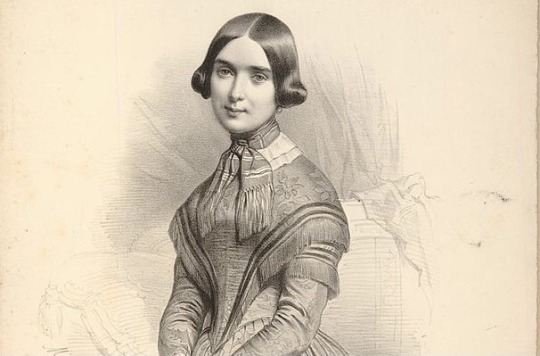
Marie Moke gave her first concert at the age of eight and by the age of fifteen, she was already known in Belgium, Austria, Germany and Russia as an accomplished virtuoso.
She married pianist and piano manufacturer, Camille Pleyel, but they later separated on account of her promiscuity. Heinrich Heine considered her among the greatest pianists “Thalberg is a king, Liszt a prophet, Chopin a poet, Herz an advocate, Kalkbrenner a minstrel, Mme Pleyel a sibyl, and Döhler a pianist.”
Later on, she created the piano school at the Royal Conservatory in Brussels where she taught from 1848 to 1872.
Louise Farrenc 1804-1875
youtube
A French composer, virtuoso pianist and teacher, she started playing young and had piano lessons with famous teachers such as Moscheles and Hummel. She studied composition privately with Anton Reicha at the Paris Conservatoire, unable to go to composition classes as a woman. By the 1820s she was touring France, giving concerts.
In 1842 she was made Professor of Piano at the Paris Conservatoire where she stayed for 30 years. For a decade she was paid less than the male teachers. Only after the triumphant premiere of her nonet did she demand and receive equal pay. She wrote a wide variety of piano music, but her chamber pieces are considered to be her best work.
Pauline Viardot 1821-1910
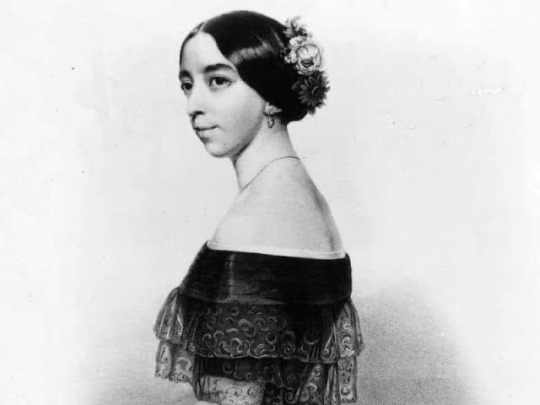
From a musical family (including her older sister, Maria Malibran) Pauline was trained by her father on the piano and in singing.
In her youth she took piano lessons with Franz Liszt and counterpoint and harmony classes with Anton Reicha. However, despite wanting to become a concert pianist, she was directed towards singing by her mother.
Pauline began composing when she was young, but it was never her intention to become a composer. Written mainly as private pieces for her students, her works were still of professional quality and Franz Liszt declared that, with Pauline Viardot, the world had finally found a woman composer of genius. Compositions include her chamber operas Le dernier sorcier and Cendrillon.
Arabella Goddard 1836–1922
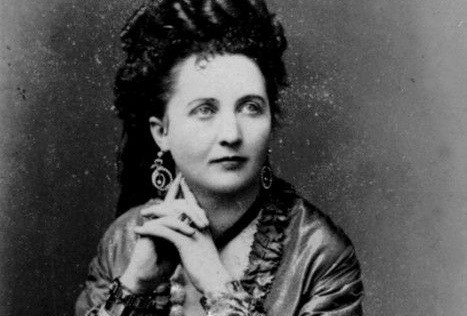
Born in France to English parents, at age six Arabella was sent to Paris to study with Friedrich Kalkbrenner. Aged seven she played for myself and George much to our pleasure.
During the 1848 Revolution her family had to return to England; there, Arabella had further lessons with Lucy Anderson and Sigismond Thalberg. She was known for her ability to play recitals from memory.
Arabella was appointed a teacher at the Royal College of Music in 1883. This was the RCM’s first year of operation and Arabella was its first female professor. She composed a small number of piano pieces, including a suite of six waltzes.
Marcelina Czartoryska 1817-1894

Born into the aristocratic Polish family, the Radziwiłłs, Marcelina was taught piano by Carl Czerny in Vienna and by myself in Paris. She gave concerts across Europe, with Franz Liszt, Pauline Viardot and Henri Vieuxtemps.
From 1870 she lived in Kraków, where she gave mainly private concerts and, thanks to her artistic connections, contributed to founding Kraków’s Academy of Music in 1888.
Maria Kalergis 1822-1874
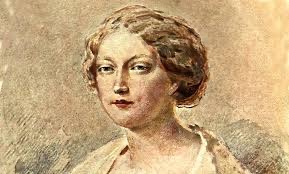
Raised in Saint Petersburg in the home of her paternal uncle, the Tsar's minister of foreign affairs, Maria received a thorough education where she evinced an early musical talent.
She was a student of mine and held salons in Paris whose guests included Liszt, Richard Wagner, de Musset, Gautier and Heine. Later, she became a hostess and a patron of the arts in Warsaw.
She was a co-founder of the Warsaw Musical Institute, now the Warsaw Conservatory and established the Warsaw Musical Society, now the Warsaw Philharmonic. Between 1857 and 1871 she made frequent appearances as a pianist.
On her death, Franz Liszt wrote his Elegy on Marie Kalergi.
#clara schumann#fanny mendelssohn#classical composers#romantic era#classical music#international women's day#romanticism
37 notes
·
View notes
Text
Pauline Viardot (1821-1910)
2 notes
·
View notes
Text

Maman bien étonnée d’entendre Liszt | Mummy very surprised to hear Liszt— 1837

Arrivée et déballage du piano de Chopin. Tout le village reste pétrifié d’admiration | Arrival and unpacking of Chopin’s piano. The whole village is frozen in admiration— Valdemossa, January 1839. Chopin at the piano accompanied by George, Maurice and Solange.
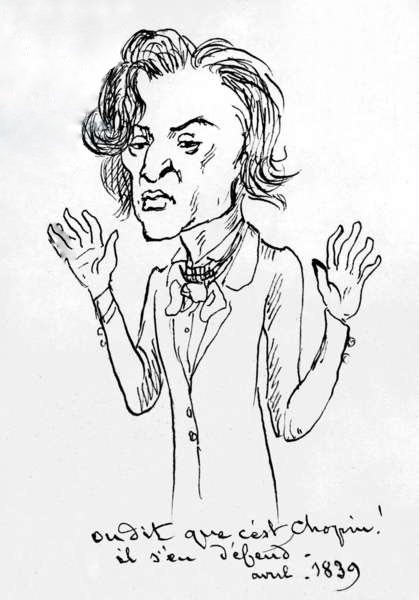
On dit que c’est Chopin ! il s’en défend | They say it’s Chopin! He denies it— April 1839

Présentation de Lambert à Chopin | Introduction of (Louis-Eugène) Lambert to Chopin— Nohant, June 1844
Delacroix / Maurice Sand (?) : Chopin, je vous présente mon ami Lambert | Chopin, I introduce you to my friend Lambert.
Chopin: C’est un petit juif ! | He’s a little Jew!
Lambert: Bonjour monsieur. | Hello monsieur.

Ça c’est le jeu de ‘Listy’ ! Il n’en faut pas pour accompagner la voix | That’s the playing of Liszt! You don’t need such playing to accompany the voice— Nohant, June 1844. Sketch drawing of Pauline Garcia Viardot and Chopin at the piano.
Caricatures by Maurice Sand (1823-1889), French artist and son of George Sand, Frédéric Chopin’s lover.
74 notes
·
View notes
